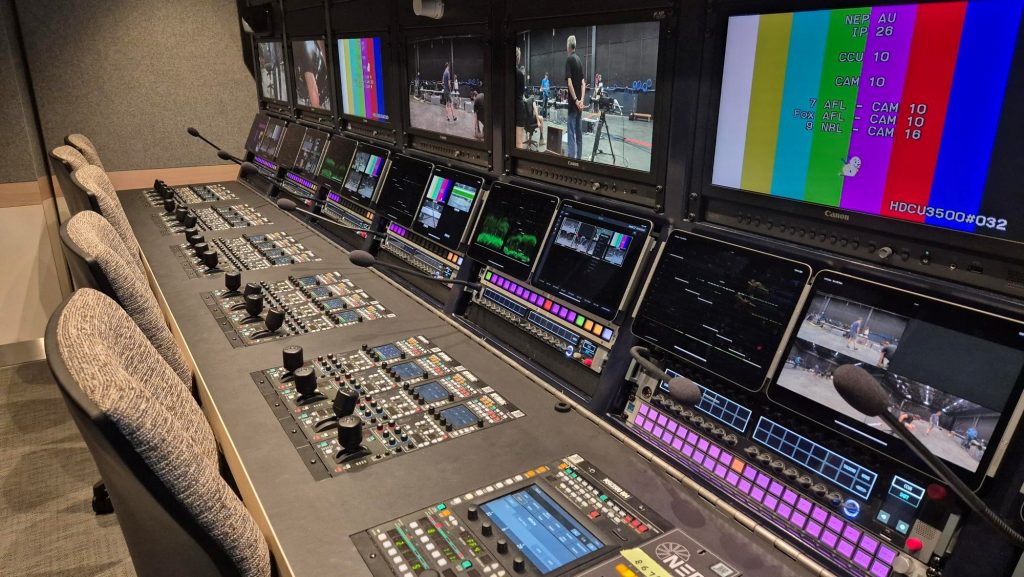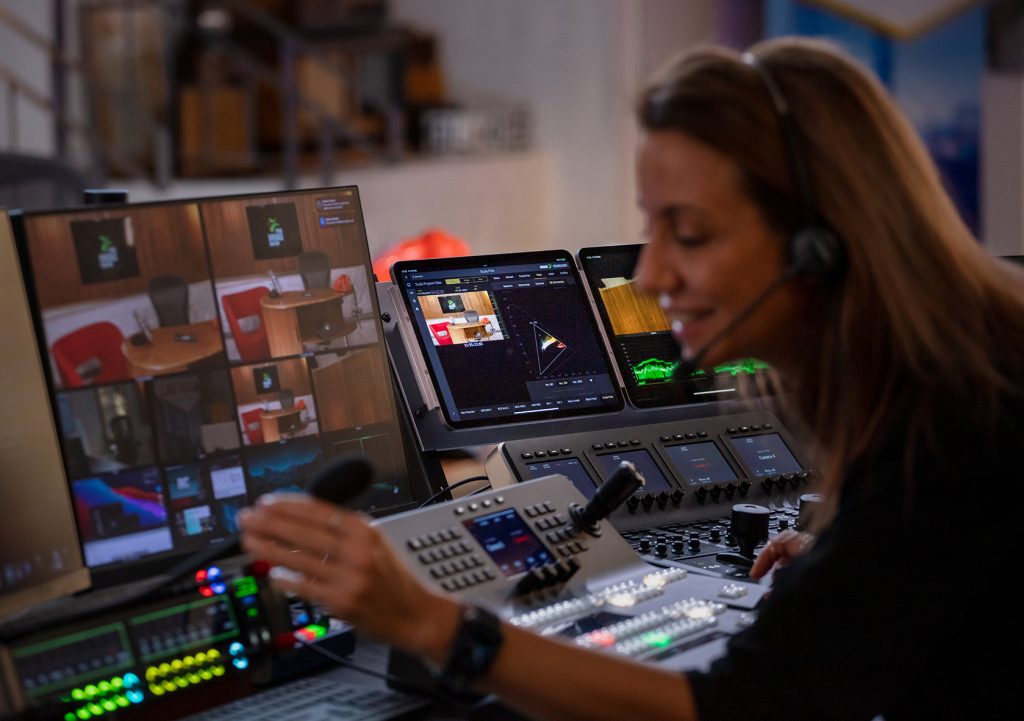Throwing Shade: How Bridge Technologies’ VB440 is Reshaping Live Sports Broadcasts
August 20, 2025
As seen in InBroadcast, August 25
As another summer rolls on again, the pressure on broadcasters to deliver seamless, high-fidelity live sports coverage across multiple venues, formats, and time zones has never been greater. At the heart of this challenge lies a crucial but often underappreciated art: camera shading. It’s the discipline that ensures visual consistency across dozens, sometimes hundreds, of simultaneous feeds, balancing brightness, colour, and contrast across variable lighting conditions to produce a coherent, immersive viewing experience.
Of particular importance in this field is the increasing dominance of Bridge Technologies’ VB440 as the go-to multifunction IP-based production probe for live sports broadcast. Facilitating joined-up production operations from anywhere – be that a centralised hub or an on-the-edge OB van – the VB440 has been involved in some of the biggest sports productions of the last five years, taking on the Herculean (or should that be Olympian?) task of production management at every level. While the VB440 was first embraced in MCRs – where its ability to monitor, test, and route signals across playout, studio, and ingest chains has made it a favourite – it’s now being adopted more widely in live studio production environments, especially for camera control.
This was most evident in 2022, where – for one of the most-watched events on the planet – the VB440 quietly controlled the show from backstage: no red cards, just green lights. With the need to facilitate camera shading across eight venues, and with some of the harshest and most contrasting light conditions going, the task wasn’t for the faint-hearted. Fortunately, the VB440 doesn’t break a sweat, even in the desert.

Flexibility, Latency, and the Power of HTML5
At the core of the VB440’s appeal is its remarkable flexibility. Built on open standards such as ST 2110 and NMOS, it separates video, audio, and metadata into independent streams, allowing users to manage them with previously unthinkable agility. It plays equally well in hybrid environments, enabling SDI and IP workflows to operate side-by-side – a major benefit for broadcasters navigating the transition to full-IP production.
And when it comes to latency, with network interfaces scalable up to 2x 200Gbps, the VB440 carefully balances demand for processing cores with its network capability in order to hit an accessible price point that maintains absolute reliability whilst still accommodating potential superusers with more beefed-up server bases. The net result is next-to-no-latency, meaning that whether your cameras are on the next floor up or a hundred kilometres away, the VB440 doesn’t flinch.
Crucially, the VB440 also makes effective use of HTML5 browser interfaces, meaning users can take their choice of monitor and control hardware. Bridge Technologies have harnessed this particularly in the form of their Instrument View Kit, which leverages the power of an iPad Pro. With its exceptional OLED display, 1600 nits brightness, and ultra-responsive touchscreen, equipment like the iPad can now be used as a fully-fledged shading interface, eliminating the need for expensive reference monitors. In this sense, Bridge are leading a charge in the promotion of ‘prosumer’ equipment and championing the role it plays in democratising access to industry-leading creative production tools especially when complimented by a harmonising tool like the VB440.
Painting by numbers
In essence, Bridge takes all these underpinning enabling elements – the scope of IP production, the convenience of HTML, the grace of exceptional consumer display technology and the sheer power of the VB440’s underpinning appliance, and adds to it exceptional GUI design, an unrivalled understanding of ST 2110 behaviour, a keen grasp of what it is production creatives really need, and an innovative mindset.
The result is the VB440’s new Canvas feature: a customisable workspace that adapts to any screen size and lets users lay out mosaics, waveform monitors, and routing controls in whatever configuration best suits their needs. From MCR to OB Van to Studio Floor, a combination of Canvas and Instrument View means that the VB440 is something akin to a Swiss Army Knife, combining both technical network oversight and industry-defining creative tools in one highly usable, accessible and intuitive package.
Real world operational feedback supports this proposition: whether handling live immersive audio monitoring, managing HDR-to-SDR conversions in post-production for next-day rebroadcast, or coordinating camera feeds across eight stadiums in real-time, the VB440 has repeatedly proved its ability to thrive in the most demanding environments.

A gold medal for flexibility
Historically, traditional SDI-based camera shading has been a task that has that required banks of expensive, dedicated reference monitors, tightly constrained workflows, and on-site specialists parked in every stadium.
Not anymore.
Now, ST 2110-enabled environments using the VB440 offer almost unlimited configuration options. For instance, a typical OB van setup might include a primary program feed on a reference monitor, a 2×2 multiviewer, and two iPads – one displaying dual camera waveform scopes, and the other offering real-time routing control. With everything running through the VB440 and accessed via HTML5, operators can adapt their workspace on the fly.
The system also plays nicely with third-party switchers and camera control panels. This can be used to facilitate a completely new approach to camera shading – one which Bridge is calling their ‘single pane of glass’ model. This consolidates shading previews, routing controls, and mosaics layouts onto a single high-resolution display, eliminating the clutter (and expense) of specialist hardware.
As Simen Frostad, Chairman of Bridge Technologies, puts it:
“For years, broadcasters have had to build their workflows around the limitations of their tools. The VB440 flips that model on its head. Now, the tools bend to the needs of the broadcaster – whether they’re shading from the next room, the next country, or the next continent.”
He continued: “Part of what makes Bridge Technologies successful in this space is our close collaboration with users. Rather than pushing fixed workflows, we actively engage with OB providers, broadcasters, and shading specialists to understand how they want to work – and then develop the VB440 accordingly. Whether it’s enabling RCP integration through GPIO-to-Ethernet converters, optimising sub-millisecond routing responses, or expanding Canvas capabilities, at Bridge we ensure that the VB440 evolves in lockstep with real-world production needs”.
With IBC fast approaching (booth 1.A71) it will be the ideal time for interested parties to see firsthand just how much remote production is being revolutionised by the VB440.